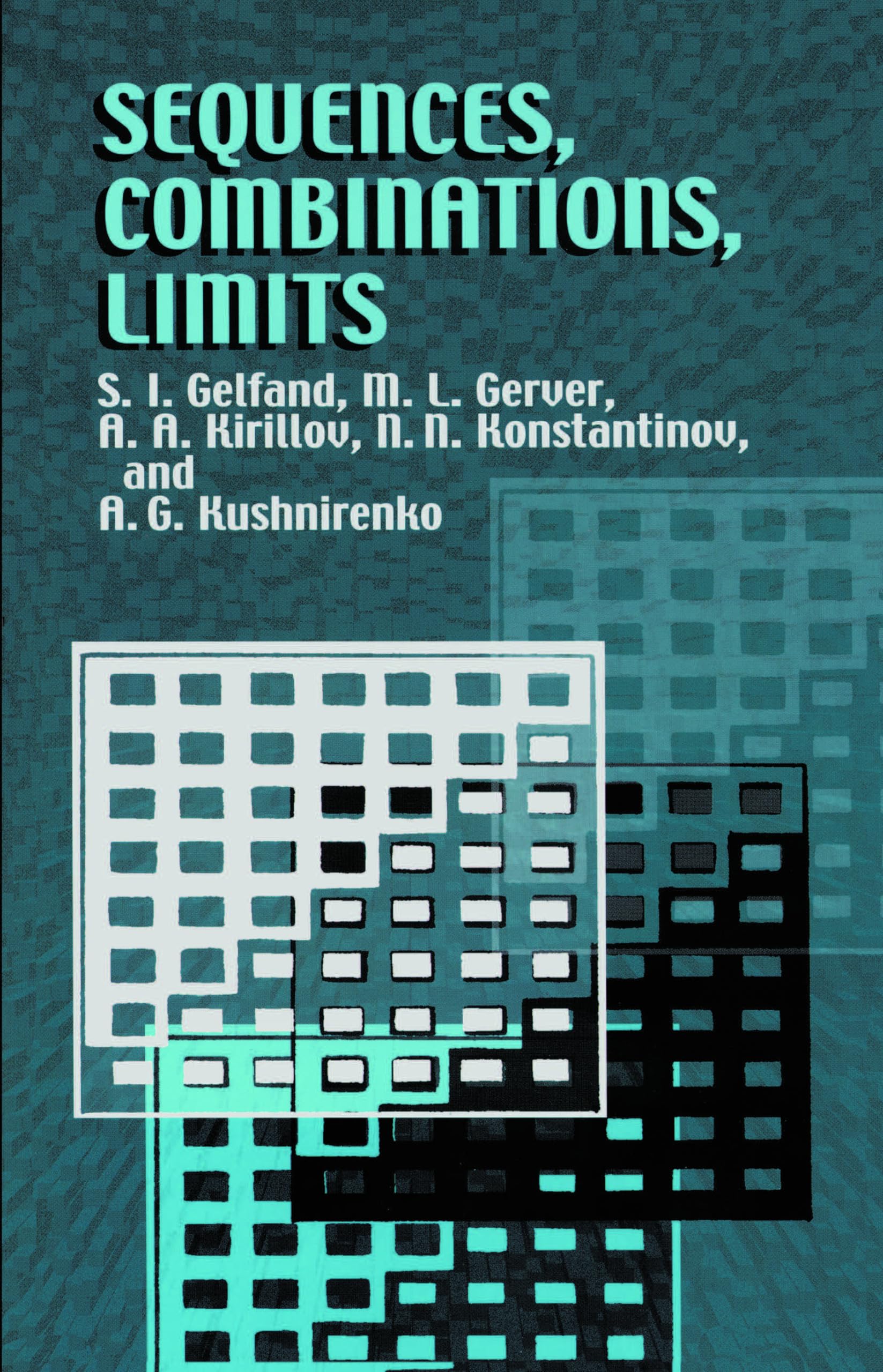Customer Services


Full description not available
S**Y
Five Stars
Excellent book. Best Price.
P**Y
Interesting but has major gaps.
Interesting little book. I wish that a solution to all the problems were actually published. A formal definition of arithmetic and geometries sequences should have been provided, not just through a simple exercise. The limit concept is well introduced but the introduction avoids to use the term function for a sequence, which I think is weird. Overall, a nice little book but a second edition would be welcome.
B**E
Five Stars
given as a gift
V**.
Rare Find
Education in other countries is ahead because such books exist by the hundreds and because the teachers actually use them in schools.
N**G
A demanding problem book.
This text consists of three chapters of problems, one each on sequences, combinatorics, and limits of sequences. It was designed to supplement mathematics instruction for students in grades 9 and 10, the last two years, of the Soviet school system. The focus is on proving theorems and many of the problems, which are well chosen, are quite challenging. There are hints in the back of the book and complete solutions are provided. Reading these solutions can be instructive because of the insights provided by the authors. There is also a brief section of test problems for which no solutions are provided.The first chapter, written by S. I. Gelfand, contains a brief exposition on sequences and mathematical induction. This exposition is followed by problems on mathematical induction, sequences of differences, and arithmetic and geometric progressions. The problem solving techniques introduced in this chapter prove useful in the remainder of the text.The second chapter, written by M. L. Gerver and A. G. Kushnirenko, consists of problems on combinatorics including combinations, the Binomial Theorem, and applications to algebra, number theory, and geometry. American readers may not be familiar with the notation C_{n}^{k}, which means the number of ways k objects can be chosen from n objects when order does not matter (combinations). The problems in this section are the most tractable and the authors suggest that the reader may want to begin with this section.The final chapter, written by A. A. Kirillov, consists of problems on limits of sequences (including one on a periodic continued fraction) and series, the Triangle Inequality, and the use of quantifiers. Many of these problems would be suitable for a college course in real analysis.The final author, N. N. Konstantinov, helped select problems and contributed to the editing of the text.Since this is a problem book and there is little in the way of exposition, product and summation notation are not introduced and very little terminology is defined. Consequently, the reader would benefit from working through these problems while reading an accompanying expository work on these topics.
Trustpilot
3 days ago
2 months ago